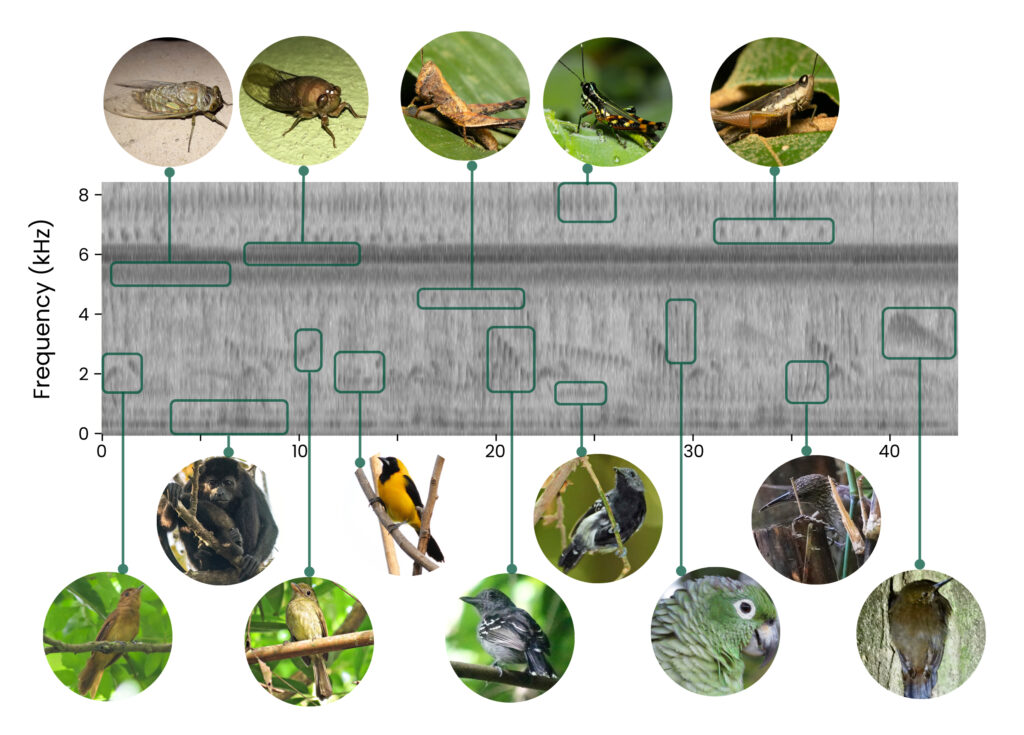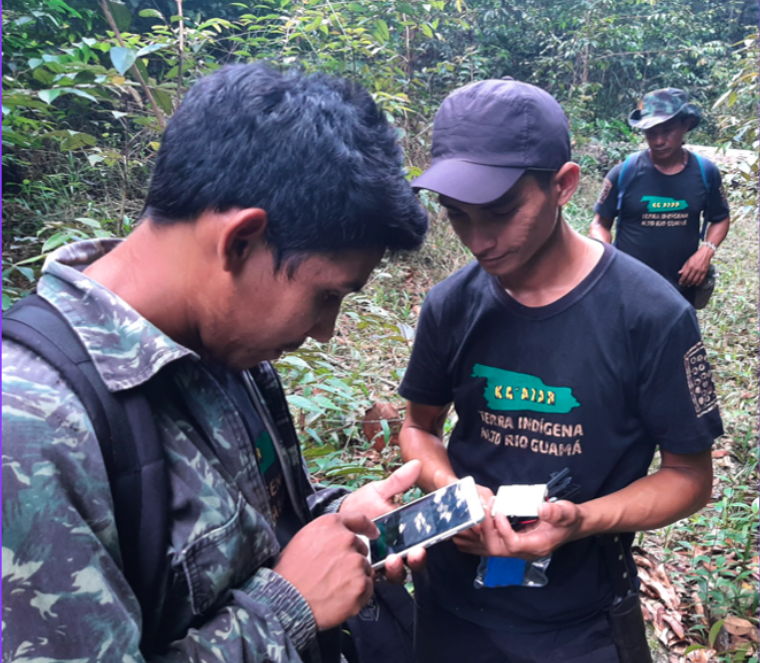The Power of Sound & AI to Track Global Biodiversity Framework (GBF) Targets

Rainforest Connection (RFCx) and the RFCx Arbimon team have recently unveiled an enlightening white paper titled “Harnessing the Power of Sound and AI to Track Global Biodiversity Framework (GBF) Targets“. This comprehensive report showcases the potential of acoustic and AI technology to monitor biodiversity and aligns real-world case studies with specific GBF targets.
The Importance of Biodiversity
Biodiverse ecosystems are critical to maintaining the health of our planet, providing numerous essential ecosystem services that underpin human well-being and the global economy. However, we are facing a biodiversity loss crisis, with thousands of species facing extinction due to large-scale land conversion, deforestation, and climate change. To counteract this crisis, the Kunming-Montreal Global Biodiversity Framework (GBF) outlines a series of ambitious, yet necessary, targets for preserving and restoring biodiversity worldwide. Achieving these targets will require effective monitoring and assessment tools that can harness the power of advanced technologies.
Acoustic Monitoring and AI
Incorporating AI into passive acoustic monitoring (PAM) has the potential to revolutionize our understanding of ecosystems, species, and the impacts of environmental changes. By utilizing PAM and AI, researchers can gather systematic and up-to-date data on the presence, distribution, and behavior of a wide range of species, from birds and mammals to insects and frogs. This innovative approach is a non-invasive, cost-effective, and scalable solution for monitoring biodiversity, tracking progress towards GBF targets, and supporting evidence-based conservation efforts. Ecoacoustics can also be combined with additional technologies, such as camera-trapping, eDNA, and remote sensing, to build a comprehensive understanding of biodiversity patterns and trends.

Case Studies
The PAM and AI approach offers a reliable, scalable, and comprehensive means of quantitatively informing GBF indicators and tracking progress towards each of the targets. In line with GBF target 2, RFCx is involved in a project to assess and monitor biodiversity in Atlantic Forest restoration areas. Our results demonstrate the positive effects of restoration on biodiversity, with restored sites able to host a similar number of species as protected forests. Another collaborative project evaluated the impact of forest certification on bird communities, highlighting the potential of certified forests to sustain biodiversity and livelihoods (GBF target 10).
RFCx is also working on projects related to particular species. We are monitoring the Critically Endangered mangrove finch in the Galápagos to help maintain the population (GBF target 4). RFCx has also established a real-time detection pipeline to monitor the spread of invasive grey squirrels in the UK (GBF target 6). RFCx’s approach is deeply collaborative; we aim to empower local organizations and communities to use technology in the stewarding of their lands (GBF targets 20 & 21). We work with Indigenous communities such as the Tembé in Brazil to combine acoustic technology with their traditional knowledge and land management.

Key Takeaways
The PAM and AI pipeline is a reliable, scalable, and comprehensive way of quantitatively informing the adopted GBF indicators and tracking progress towards the GBF targets. RFCx and Arbimon are pioneering these efforts in collaboration with Huawei and other partners, demonstrating the immense potential of nature’s symphony. By harnessing acoustic and AI technology, we can make significant strides toward the protection and preservation of our natural world.
We encourage you to explore the full white paper below and read more about how acoustic monitoring and AI are leveraged for biodiversity monitoring and conservation action. You can also read about all eleven case studies from our collaborative work across the globe, demonstrating how acoustic monitoring aligns with many of the GBF targets.

